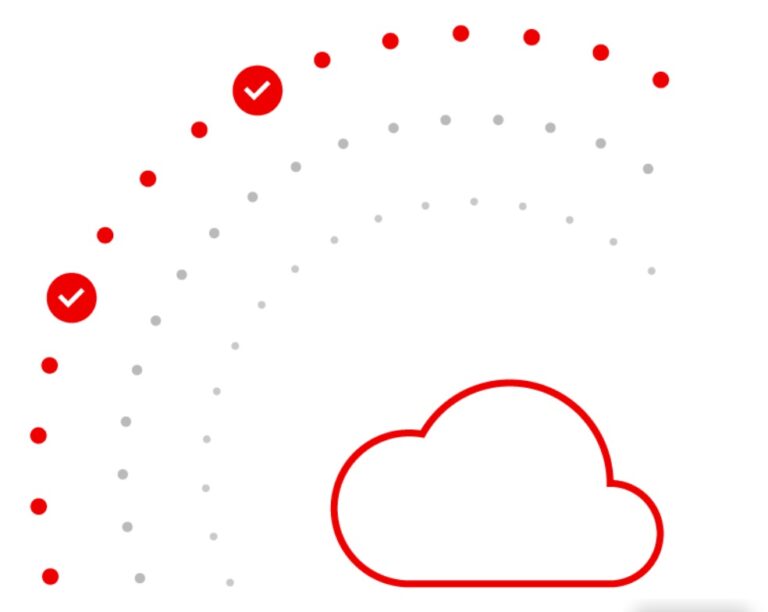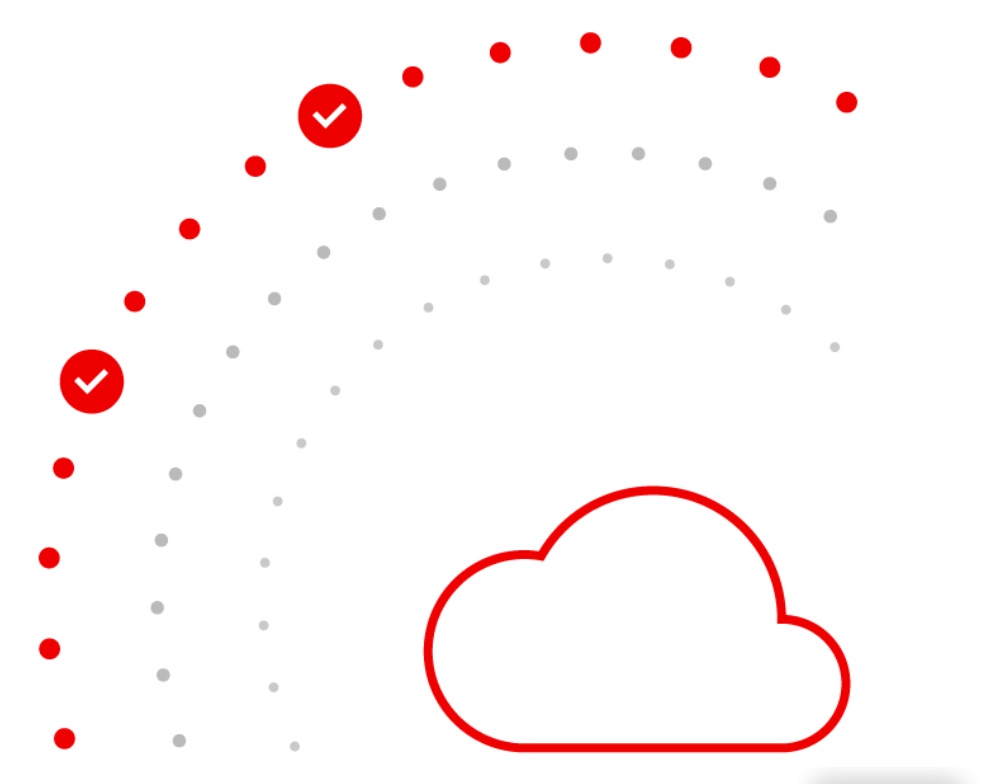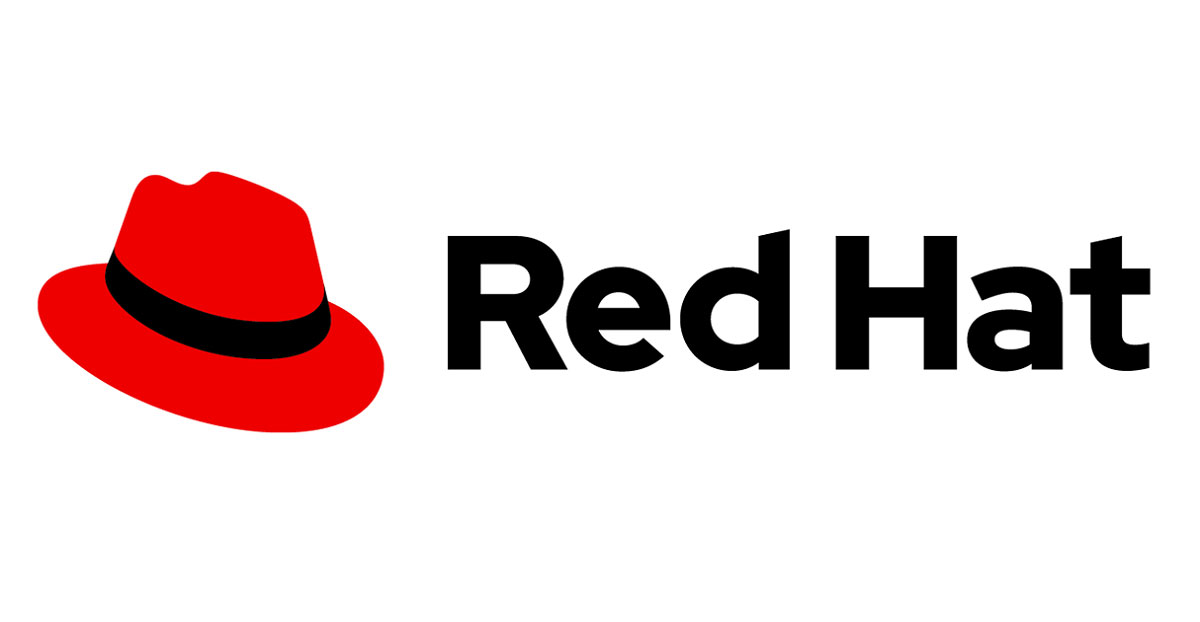ปฏิวัติเทคโนโลยีค้าปลีก สู่ประสบการณ์การจับจ่ายในร้าน ที่บูรณาการวิธีการที่ดีที่สุดไว้ด้วยกันอย่างสมบูรณ์แบบ

เมื่อเข้าสู่ปี 2567 อย่างเต็มตัว ความชุลมุนของเทศกาลจับจ่ายหาซื้อของขวัญปีใหม่ก็จบลง แต่ไม่ว่านักช้อปจะวางแผนจัดหาของขวัญไว้ล่วงหน้าหรือมาช้อปเอานาทีสุดท้ายก็ตาม เชื่อว่ายังมีข้อเสนอแนะดี ๆ อยู่มากมายที่วนเวียนอยู่ในใจนักช้อป และอยากจะบอกกับผู้ค้าปลีกให้ได้ปรับปรุงเพื่อยกระดับประสบการณ์ช้อปปิ้งให้ราบรื่นมากขึ้น เช่น บรรยากาศในร้านแน่นขนัดเกินไปไหม สามารถใช้วิธีชำระเงินด้วยตนเองได้ไหม และอีกประการหนึ่งที่จะช่วยให้ผู้ค้าปลีกได้รับรู้ปริมาณสินค้าคงคลังที่เป็นปัจจุบันจริง ๆ คือ สามารถสั่งซื้อสินค้าทางออนไลน์แล้วมารับสินค้าที่หน้าร้านได้หรือไม่ ผู้ค้าปลีกจะตอบโจทย์เหล่านี้อย่างไร
การปฏิวัติวงการค้าปลีก ต้องใช้เทคโนโลยีและเครื่องมือหลากหลาย แต่ AI คือเทคโนโลยีที่สามารถเพิ่มประสิทธิภาพให้กระบวนการต่าง ๆ ได้อย่างชัดเจนที่สุด ตั้งแต่การชำระเงินด้วยตนเอง ไปจนถึงการบริหารจัดการสินค้าคงคลังและอื่น ๆ อีกมาก แต่แค่นำ AI มาใช้ในร้านค้านั้นไม่เพียงพอ ผู้ค้าปลีกต้องใช้แพลตฟอร์มเดียวสำหรับเอดจ์คอมพิวติ้งที่สามารถรองรับการใช้ AI และเทคโนโลยีสำคัญอื่น ๆ ที่อยู่ในกลยุทธ์การทรานส์ฟอร์มของตน ทั้งนี้เอดจ์คอมพิวติ้งเป็นหัวข้อสนทนาอย่างต่อเนื่องในหมู่ผู้นำองค์กร ไม่ว่าจะเป็นเรื่องของเอดจ์ในอวกาศที่ห่างไกล ยานพาหนะที่ควบคุมด้วยซอฟต์แวร์ที่เป็นอุปกรณ์เอดจ์คอมพิวติ้งต่าง ๆ หรือเซ็นเซอร์ระยะไกลที่ติดตั้งอยู่ในทะเลทราย กล่าวได้ว่าเอดจ์คอมพิวติ้งกำลังช่วยขับเคลื่อนนวัตกรรมที่ก่อให้เกิดการเปลี่ยนแปลงให้กับอุตสาหกรรมทุกประเภท
ความคาดหวังของลูกค้าที่สูงขึ้นและตลาดที่เปลี่ยนแปลงตลอดเวลา ทำให้มีการนำเทคโนโลยีด้านการค้าปลีกมาใช้มากขึ้น การระบาดของโรคเป็นสถานการณ์ที่เร่งให้ร้านอาหารและซูเปอร์มาร์เก็ตต้องเปลี่ยนรูปแบบการทำธุรกิจให้มีทางเลือกให้ลูกค้ามากขึ้น เช่น การรับสินค้าโดยไม่ต้องลงจากรถและอีคอมเมิร์ซ นอกจากนี้การที่ต้นทุนด้านแรงงานกำลังเพิ่มขึ้น แต่ต้นทุนของเทคโนโลยีหลักต่าง ๆ กำลังลดลง โดยเฉพาะเทคโนโลยีที่ใช้ที่เอดจ์ ทำให้ผู้ค้าปลีกกำลังเริ่มมองหาโซลูชันใหม่ ๆ ที่จะช่วยให้สามารถมอบประสบการณ์การช้อปปิ้งให้กับลูกค้าได้อย่างมีประสิทธิภาพและตรงตามความต้องการเฉพาะตัวของลูกค้าแต่ละรายมากขึ้น เช่น
- ประสบการณ์ระหว่างการช้อปหน้าร้านและออนไลน์แบบไร้รอยต่อ ไม่ว่าจะเป็นความสามารถในการมองเห็นสินค้าคงคลังได้แบบเรียลไทม์และทางเลือกแบบเจาะจงเฉพาะบุคคลอย่างแท้จริงได้มากขึ้น ไปจนถึงการจัดส่งด่วนและอื่น ๆ
- การจัดวางสินค้าในร้านรูปแบบใหม่ที่ทันสมัย ที่ช่วยให้การช้อปหน้าร้านสะดวกและรวดเร็วมากขึ้น ไม่ว่าจะเป็นการเลือกดูสินค้าในร้าน หรือการรับสินค้าที่สั่งซื้อไว้ทางออนไลน์
- ประสบการณ์การชำระเงินด้วยตนเองที่มีประสิทธิภาพมากขึ้น โดยลูกค้าสามารถหยิบสินค้าและชำระเงินด้วยตนเองได้เลย
- โซลูชันป้องกันการสูญเสียที่ทันสมัย เพื่อลดความเสี่ยงและผลกระทบของ “shrinkage” หรือความสูญเสียสินค้าคงคลังที่เกิดจากการลักขโมยและการใช้ความรุนแรง
เอดจ์คอมพิวติ้งสามารถยกระดับประสบการณ์ของผู้บริโภคในธุรกิจค้าปลีกได้อย่างมาก
ด้วยเหตุดังกล่าวข้างต้น เราจึงเห็นผู้ค้าปลีกรวมถึงลูกค้าของเร้ดแฮท ลงทุนกับส่วนสำคัญสามด้าน คือ ปรับปรุงระบบขายหน้าร้าน (point of sale: POS) ให้ทันสมัย ลงทุนด้านคอมพิวเตอร์วิชัน และคลังสินค้าอัตโนมัติ

Lorem ipsum dolor sit amet, consectetur adipiscing elit. Ut elit tellus, luctus nec ullamcorper mattis, pulvinar dapibus leo.
ตัวอย่าง ลูกค้ารายหนึ่งมีร้านค้า 1,200 แห่งทั่วประเทศ ให้บริการลูกค้ามากกว่า 65 ล้านรายในอเมริกาเหนือ ลูกค้ารายนี้ต้องประเมินเทคโนโลยีที่ใช้อยู่ใหม่ เพราะต้องเผชิญกับต้นทุนการดำเนินงานที่เพิ่มขึ้น มีความจำเป็นต้องเพิ่มประสบการณ์ที่ดีให้กับลูกค้าที่เข้ามาในร้านอย่างต่อเนื่อง ณ จุดชำระเงินที่อาจต้องใช้โปรแกรมสะสมคะแนน และต้องเผชิญกับคำสั่งที่เกิดขึ้นตลอดเวลาเพื่อจัดการระบบ POS ของร้านค้าทั่วประเทศให้มีประสิทธิภาพ
เพื่อแก้ไขความท้าทายดังกล่าว บริษัทเลือกที่จะรีเซ็ตโครงสร้างพื้นฐาน POS ใหม่ โดยใช้แพลตฟอร์มระดับองค์กรครบวงจรในแพลตฟอร์มเดียวสำหรับเอดจ์คอมพิวติ้งโดยการใช้ Hat Enterprise Linux (RHEL), Red Hat OpenShift และ Red Hat Ansible Automation Platform
การตัดสินใจดังกล่าว เป็นการจัดการความท้าทายทางเทคนิคสำคัญ 4 ประการคือ
- ทำความเข้าใจการใช้ RHEL ในรูปแบบที่เน้นไปที่เอดจ์ เพื่อสร้างแอปพลิเคชัน POS ใหม่
- การโยกย้ายการทำงานไปที่ระบบ POS ที่ไม่ต้องใช้เซิร์ฟเวอร์ด้วยการวางแอปพลิเคชันต่าง ๆ ไว้บนคอนเทนเนอร์
- คงความแข็งแกร่งด้านความปลอดภัยและความปลอดภัยในการชำระเงินด้วยบัตร โดยใช้ immutable image ของ RHEL และ containerizing applications
- สามารถใช้อุปกรณ์ต่อพ่วงที่เชื่อมต่อที่ได้มาตรฐานความปลอดภัยในการชำระเงินด้วยบัตร เช่นเครื่องสแกนบาร์โค้ด อุปกรณ์การป้อนรหัส (PIN pads) และเครื่องพิมพ์ใบเสร็จต่าง ๆ เพื่อให้สามารถรันแอปพลิเคชัน POS ที่พัฒนาใหม่ได้
ผู้ค้าปลีกเลือกที่จะปรับโครงสร้างพื้นฐาน POS ของตนให้ทันสมัยด้วยแพลตฟอร์มระดับองค์กรที่สามารถจัดการกับความต้องการด้านเครือข่ายเอดจ์ให้กับอุตสาหกรรมค้าปลีกได้ ซึ่งจะช่วยให้ผู้ค้าปลีกใช้ข้อมูลได้ใกล้กับจุดที่ข้อมูลเข้าสู่ระบบได้มากขึ้น และเป็นจุดที่เกิดปฏิสัมพันธ์กับลูกค้าส่วนใหญ่ หากพิจารณาตัวอย่างที่ยกมาข้างต้น ก็คือลูกค้าจากร้านค้า 1,200 แห่งของบริษัทค้าปลีกรายนั้น
เมื่อได้ปรับ POS ให้ทันสมัยแล้ว ผู้ค้าปลีกจะตอบสนองต่อสภาวะตลาดที่เปลี่ยนแปลงอย่างรวดเร็วได้ดีขึ้น สามารถสร้างประสบการณ์ที่แตกต่างให้กับลูกค้า และเพิ่มผลลัพธ์จากการดำเนินงานได้อย่างมีประสิทธิภาพมากขึ้น โครงสร้างพื้นฐานที่เชื่อถือได้และเสถียร ช่วยให้ผู้ค้าปลีกสามารถมุ่งให้ความสำคัญกับการปฏิบ้ติตามกฎระเบียบและมาตรการด้านความปลอดภัยได้อย่างเต็มที่
ระบบอัตโนมัติจะช่วยให้ทีมไอทีทำการบำรุงรักษาหรืออัปเดทระบบความปลอดภัยได้ตามความจำเป็นตามต้องการ และยังคงคำนึงถึงความปลอดภัยมาเป็นอันดับแรกอยู่เสมอ ซึ่งอาจหมายถึงการตรวจจับปัญหาที่อาจเกิดขึ้น ก่อนที่จะเข้าสู่กระบวนการผลิต และบรรเทาหรือขจัดปัญหานั้น ๆ ให้หมดไป ทีมงานจึงไม่ต้องใช้เวลาไปกับการบำรุงรักษาด้วยวิธีการซ้ำ ๆ และหันไปโฟกัสเรื่องอื่นที่สำคัญ เช่น ความปลอดภัยด้านไอทีและการสร้างประสบการณ์ที่ดีให้กับลูกค้า ซึ่งจะส่งผลให้ลูกค้าได้รับประสบการณ์ที่ดีมากขึ้นพร้อม ๆ กับลดต้นทุนการดำเนินงาน และเพิ่มผลกำไร
นวัตกรรมแบบเปิดของเร้ดแฮท ช่วยเพิ่มประสบการณ์ “ในร้านค้า” ให้ทันสมัย
ลูกค้าจำนวนมากใช้โซลูชันที่ขับเคลื่อนด้วย AI และคอมพิวเตอร์วิชันที่ทันสมัยจากผู้จำหน่ายซอฟต์แวร์อิสระ (ISVs) เพื่อให้ลูกค้าสามารถชำระเงินได้ด้วยตนเอง ด้วยวิธีการที่ง่ายมากกว่าการสแกนบาร์โค้ด ซึ่งนั่นหมายความว่าลูกค้าสามารถหยิบสินค้าที่ต้องการใส่ตระกร้าและกลับออกไปโดยไม่ต้องต่อแถวชำระเงิน ในทำนองเดียวกับแอปพลิเคชันที่ขับเคลื่อนด้วย AI สามารถช่วยวิเคราะห์การเคลื่อนที่ของลูกค้า เพื่อทำความเข้าใจพฤติกรรมผู้บริโภค และโซลูชันป้องกันสินค้าสูญหายที่ทันสมัยที่ไม่ต้องพึ่งพา RFIDs หรือแท็กข้อมูลเพื่อความปลอดภัยที่ติดอยู่กับตัวสินค้า
การจะใช้แอปพลิเคชันประเภทนี้ได้นั้น ผู้ค้าปลีกต้องใช้แพลตฟอร์มการพัฒนาแอปพลิเคชันระดับองค์กรที่ทันสมัยกับเซิร์ฟเวอร์ในร้านค้า ที่เชื่อมต่อกลับไปยังแอปพลิเคชันหลักต่าง ๆ ของร้านผ่านไฮบริดคลาวด์ Red Hat OpenShift และ Red Hat OpenShift AI สามารถช่วยให้ลูกค้าใช้แอปพลิเคชันเหล่านี้ได้ ไม่ว่าแพลตฟอร์มเหล่านี้จะเป็นแบบ homegrown หรือ ISV build-on
เมื่อเร็ว ๆ นี้ เร้ดแฮทได้ประกาศว่า Red Hat Device Edge พร้อมให้ใช้งานได้แล้ว Red Hat Device Edge มอบแพลตฟอร์มที่คงเส้นคงวา และออกแบบมาสำหรับสภาพแวดล้อมที่มีทรัพยากรจำกัด โดยเฉพาะสภาพแวดล้อมที่ต้องการการประมวลผลฟอร์มแฟคเตอร์ขนาดเล็กที่เอดจ์ คุณสมบัติดังกล่าวทำให้โซลูชันนี้เหมาะกับระบบ POS ของร้านค้าปลีกเป็นอย่างมาก Red Hat Device Edge เป็นที่รวมของความพร้อมใช้งานในระดับองค์กร และสนับสนุนโครงการชุมชนโอเพ่นซอร์สที่นำโดย MicroShift (โครงการ lightweight Kubernetest ที่ใช้ความสามารถด้านเอดจ์ของ Red Hat OpenShift) มาพร้อมกับ Red Hat Enterprise Linux และ Red Hat Ansible Automation Platform สำหรับการบริหารจัดการตั้งแต่การเริ่มพัฒนา (Day 1) และวันที่มีการใช้ระบบต่าง ๆ และต้องบริหารจัดการต่อไป (Day 2) ให้กับไซต์และอุปกรณ์นับร้อยนับพันได้อย่างสอดคล้องกันมากขึ้น









